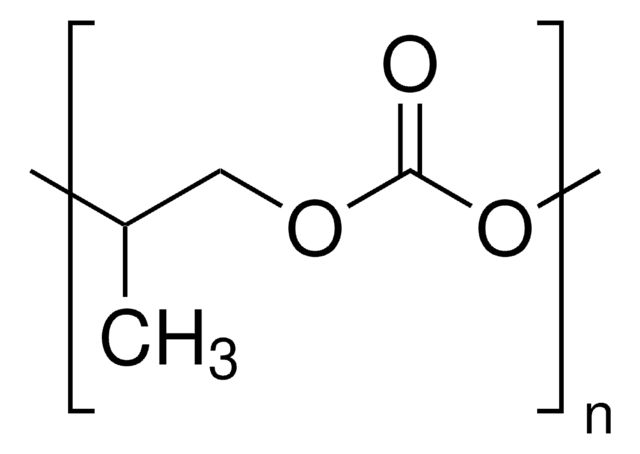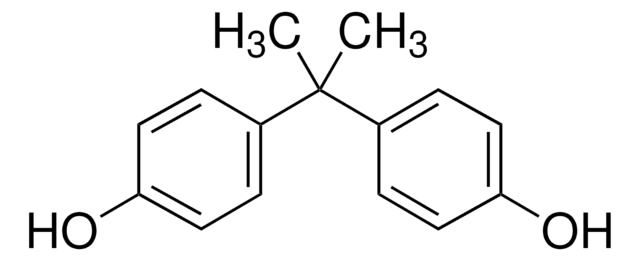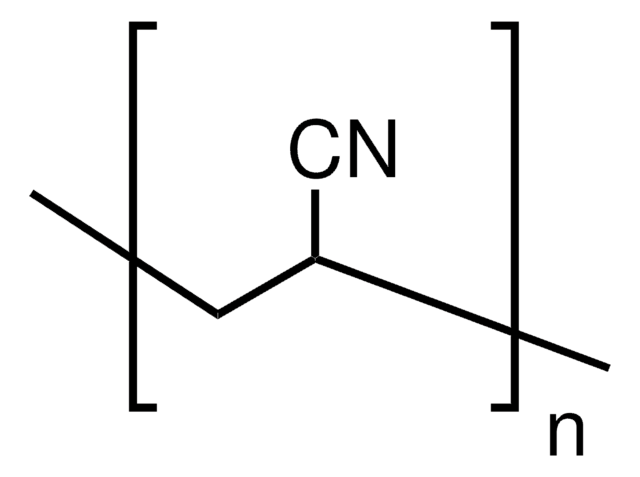181625
Poly(Bisphenol A carbonate)
average Mw ~45,000 by GPC
Synonym(s):
4,4′-Dihydroxydiphenyl-2,2-propane carbonate polymer, Bisphenol A carbonate homopolymer, Carbonic acid-4,4′-dihydroxydiphenyl-2,2-propane copolymer, Poly(dian carbonate), Poly[2,2-bis(4-hydroxyphenyl)propane carbonate]
About This Item
Recommended Products
mol wt
average Mw ~45,000 by GPC
refractive index
n20/D 1.585
transition temp
Tg 150 °C
Tm 267 °C
density
1.2 g/mL at 25 °C (lit.)
SMILES string
CC(C)(c1ccc(O)cc1)c2ccc(O)cc2
InChI
1S/C15H16O2.CH2O3/c1-15(2,11-3-7-13(16)8-4-11)12-5-9-14(17)10-6-12;2-1(3)4/h3-10,16-17H,1-2H3;(H2,2,3,4)
InChI key
XSXWYGABGYBZRM-UHFFFAOYSA-N
Gene Information
mouse ... Esr1(13982)
rat ... Ar(24208)
Looking for similar products? Visit Product Comparison Guide
General description
Application
- To prepare transparent nanocomposites for optical applications.
- To study the wettability of graphene.
Storage Class Code
11 - Combustible Solids
WGK
WGK 3
Flash Point(F)
Not applicable
Flash Point(C)
Not applicable
Personal Protective Equipment
Choose from one of the most recent versions:
Already Own This Product?
Find documentation for the products that you have recently purchased in the Document Library.
Customers Also Viewed
Our team of scientists has experience in all areas of research including Life Science, Material Science, Chemical Synthesis, Chromatography, Analytical and many others.
Contact Technical Service










